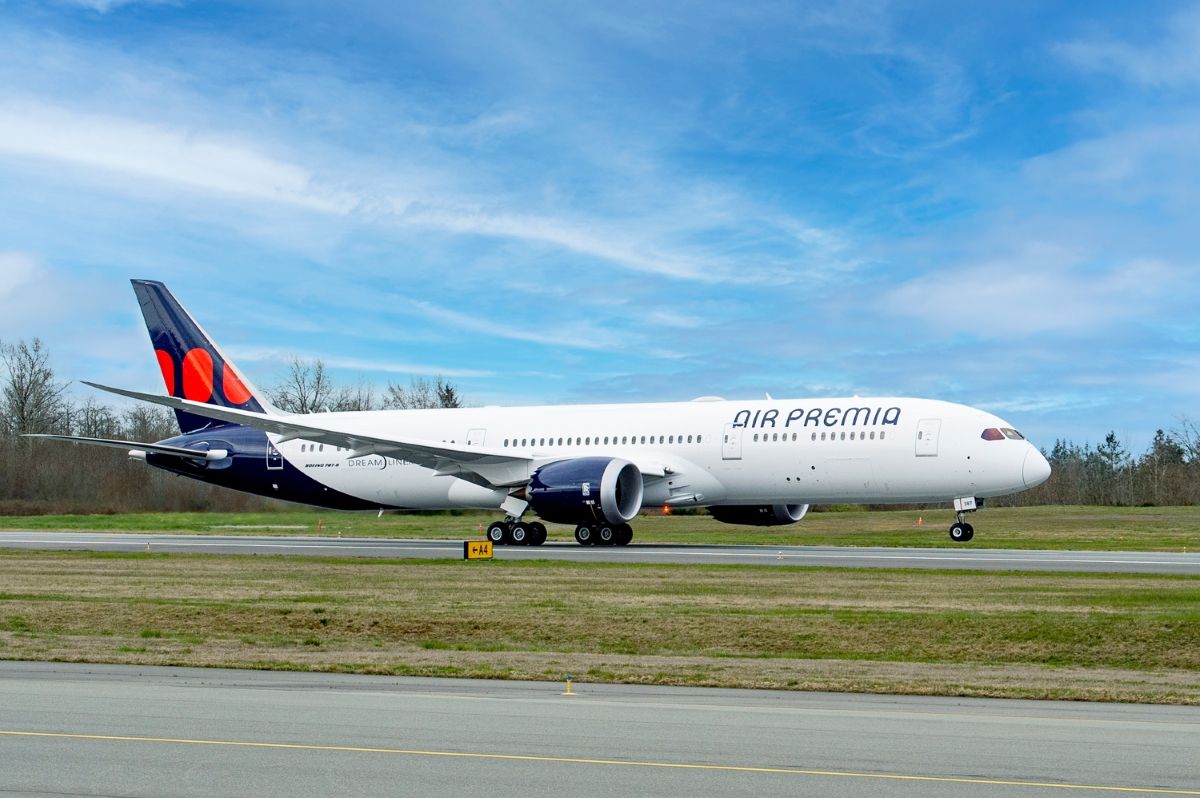Summary The rise of budget airlines led to the hybrid model offering affordable prices with high-quality service. No strict rules define the hybrid model, but the goal is to offer a quality service at lower costs. Airlines like JetBlue and Air Premia embrace the hybrid model, combining budget airline amenities with features of legacy carriers.
Since the inception of the low-cost carrier business model in 1949, first with Pacific Southwest Airlines (PSA), the airline industry has changed dramatically. Many new budget airlines have emerged across the world, disrupting the traditional market dominated by full-service carriers. Not surprisingly, the popularity of low-cost has meant full-service carriers lost a significant market share.

Legacy airlines have adopted cost-cutting strategies to stay competitive, while budget airlines have focused on improving the passenger experience and attracting new customers. As the industry has evolved alongside the rise of low-cost carriers, a relatively new airline model known as the hybrid model has emerged. Although several studies have explored this concept, airlines rarely categorize themselves as such in their corporate communications.
Balancing low price with quality The growing competition between low-cost and full-service airlines led to the development of a new business model. In simple terms, hybrid airlines typically operate on a low-cost carrier model but also include features of legacy carriers, such as improved customer service, frequent flier programs ( although several low-cost carriers nowadays have FFPs, too ), multiple cabin classes, and other complimentary amenities. Full-service carrier (FSC) Low-cost carrier (LCC) Fleet Mixed, large-sized fleets Homogeneous, single-type fleets Airport Primary Secondary/Regional Cabin Multiple-class cabin (typically three-class but may also feature two or four-class cabins) Single-class cabin (high-density economy class) Network Hub and spoke Point to Point Coverage Long, medium and short-haul Medium to short-haul Frequent Flier Program ✅ Rarely Airline alliances ✅ ❌ Fare Large price range, depending on the cabin class, channel, traveler Typically low Now that we understand the differences between LCCs and FSCs, we can position the hybrid model somewhere in between.
However, it is important to note that there are no strict rules defining the hybrid model other than its goal of offering high-quality service at lower costs. Therefore, certain airlines fitting into the hybrid category, such as JetBlue, operate a mixed fleet of medium-sized narrowbody aircraft, while Air Premia, the first airline, as per AeroXplorer , to categorize itself as a hybrid, operates a single-type widebody fleet. Some hybrid airlines operate from primary airports, while others use secondary or regional ones, demonstrating that there is not a single formula for how hybrid airlines function.
The hybrid model serves passengers Consumers are always seeking a balance between affordable prices and high-quality products. Indeed, the hybrid business model addresses this need by encouraging companies to find a better balance and offering passengers more options, according to a 2017 report by Expert Journal of Business and Management . This model provides choices that include both quality and affordability, rather than just expensive, high-quality options or low-cost, low-quality ones.
According to the report, "The hybrid model stimulates companies to offer a wide range of service to all passenger segments, increasing revenues through the ancillary revenue systems. This helps passengers to choose and make their travel more easy and comfortable at the same time." The case study: JetBlue Airways JetBlue Airways avoids clear labeling to position itself differently in the market.
JetBlue's official communication doesn't distinctly position the airline as either a low-cost carrier or a full-service carrier. The airline does not specify if they are a hybrid airline or a leisure airline, which leaves ample room for interpretation. When discussing JetBlue , reports in various media outlets around the world typically refer to it as a budget airline with elements of a full-service carrier.
Other publications may label it as a hybrid airline. In this case, when discussing airline operational models, JetBlue clearly has characteristics akin to legacy and low-cost carriers, making it a hybrid airline. JetBlue features akin to legacy carriers Free WiFi, complimentary snacks and beverages, spacious legroom in economy class, multiple cabin classes, seatback monitors, loyalty program, transatlantic flights, airline codeshare agreements JetBlue features akin to low-cost carriers Low-fare tickets, young and not too mixed narrowbody fleet, point-to-point routes, independence from major airline alliances Yes, but there’s a catch.
The first in the world: Air Premia Another example of a hybrid carrier is Air Premia . Founded in 2017 by former JEJU Air president Kim Jong Chul, this South Korean airline is claimed to be one of the world's first hybrid airlines, categorizing itself as such. The airline operates a fleet of five Boeing 787 Dreamliners to keep costs low while providing a premium travel experience with more legroom in economy class.
Its 787-9s include two cabin classes: 253 seats in economy and 56 seats in premium economy, according to ch-aviation data. With this in mind, the carrier could also be categorized as a long-haul low-cost airline. However, Air Premia offers some amenities characterized by legacy carriers rather than low-cost carriers.
The South Korean airline provides complimentary baggage allowances, which is a significant benefit for passengers traveling from South Korea to the United States. Additionally, they provide free inflight meals in both classes, a perk that would usually incur a fee on other long-haul, low-cost airlines. Air Premia features akin to legacy carriers Complimentary snacks and beverages, free baggage allowances, a rather spacious legroom in economy class, multiple cabin classes, seatback monitors, loyalty program Air Premia features akin to low-cost carriers Low-fare tickets, young single-type fleet, point-to-point routes, independence from major airline alliances Seattle and Paris are among its long-haul route ambitions.
.



















